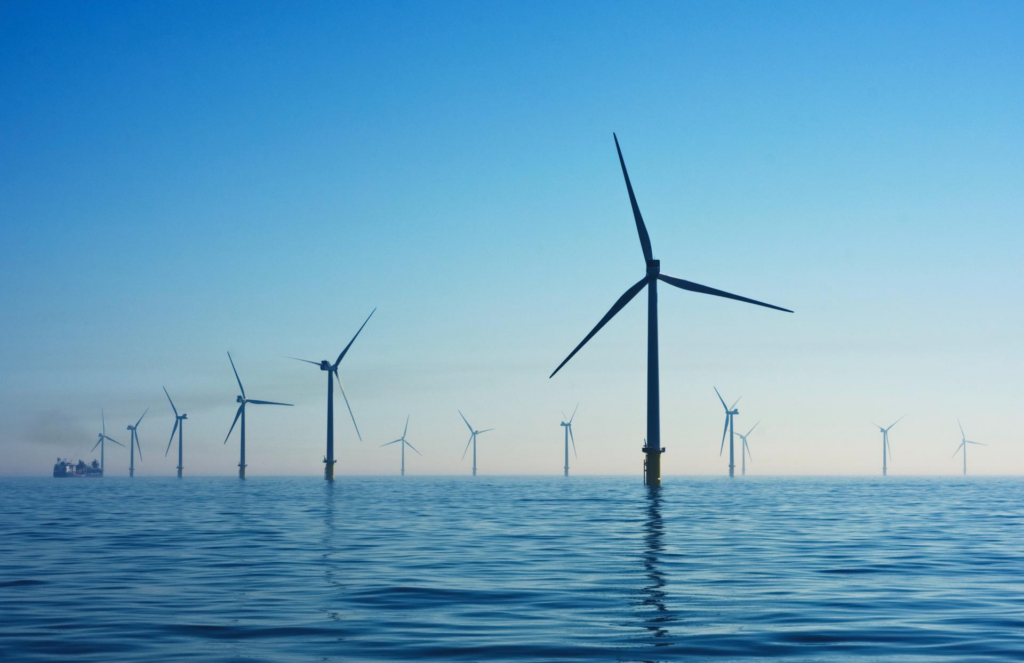29 November 2022 | Climate Tech
Winds of change
By
It’s one of the most common refrains when people discuss solar and wind energy, the two most predominant forms of renewable energy. They’re intermittent, i.e., they’re not constantly producing electrical output. Capacity factor is the five dollar phrase for a system’s observed electrical output vs. its theoretical maximum.
Solar and wind normally feature capacity factors from ~25-35%. That means they produce less than half of the output they would if they were ‘always on’, which stands to reason if you consider how often it’s really windy and the sun is at its maximum strength during the day.

Lower capacity factors aren’t ‘bad’ per se. But they can pose challenges. Especially when there are significant, unpredictable shifts in capacity. For instance, this week, the U.K. has seen a substantial drop in the output of its massive wind energy fleet.The U.K. went from generating 15+ GW from wind to less than 1 GW basically overnight. That’s like switching off six Diablo Canyon nuclear power plants (2.2 GW), i.e., it’s a big drop in output to make up for.
Practically speaking, Britain is using all of its natural gas-fired power plant capacity to make up for the shortfall. It’s also importing electricity from other markets via interconnectors (e.g., to Norway and the Netherlands).
Proponents of 100% solar and wind grids argue battery energy storage systems will be able to cover the shortfall the U.K. is currently experiencing. But these systems aren’t at that scale yet. The U.K. recently installed and turned on its largest battery energy storage system yet. It only covers about ~200 MW hours (20% of 1 GW hour), a far cry from the many GW hours the U.K. hasn’t been getting from wind for days now.
Even California, which has one of the world’s most extensive battery energy storage footprints, has 3+ GWs of battery energy storage capacity, which still only covers ~20% of the loss of electrical output in the U.K. this week.
Why am I reading this now?
There’s a ton of debate about how viable a grid with 100% solar and wind energy resources is. As renewable energy capacity increases, there will be more instances of high variability

So when I wrote last week that fossil fuels will be around for a long time, practically I’m acknowledging that natural gas has a role to play, even if only as a back-up or ‘peaking’ power source.
As we’ve discussed, battery energy storage systems won’t be at a sufficient scale, nor will they offer sufficient energy storage duration, for some time. The energy storage systems with the largest scale are old school. More than 90% of utility-scale energy storage in the U.S. is pumped hydro (also ~75% of the U.
Another option is to develop more non-intermittent energy sources. Nuclear fission works quite well for this, but even as it has picked up momentum this year, it’s still a hard sell in many parts of the world and plants take 5-10 years to build. Geothermal works great in areas where it’s naturally abundant but is relatively small-scale elsewhere. Nuclear fusion is all the rage among investors but certainly still a ways off. All are worth more development.

Another renewable energy source that’s far less intermittent and that we almost never discuss is wave and tidal power. In a recent podcast episode, Inna Braverman, the CEO of Eco Wave Power, and I discussed why wave power went by the wayside in the past decade.
For one, companies tried to develop offshore first, in reverse of how wind scaled. That led to high-profile failures that still dog the industry. Her firm develops near-shore, leveraging existing port infrastructure, and has seen some success doing so. Still, on the whole, wave power is at least 10-20 years behind wind and solar, if not more, and it gets little regulatory attention as a result.
The net-net
No easy solutions here. Grid balancing and reliability at increasing levels of solar and wind penetration are one of the core challenges for the energy transition.
Everything we’ve explored today highlights why new long-duration energy storage systems that scale are critically important. The storage capacity needed to transition more of the grid worldwide to solar and wind energy can’t all come from big lithium batteries. I’ve covered some alternate options before (see here), but none besides the established giant in pump hydro are at a viable scale and / or commercialized. Massive opportunity for innovation!
It’s also crucial that renewable energy advocacy not border on the same dogmatism that characterizes fossil fuel proponents. Designing a big, reliable grid without any fossil fuels for back-up today would be nigh impossible. Hopefully, that’s not true in 5-10 years.